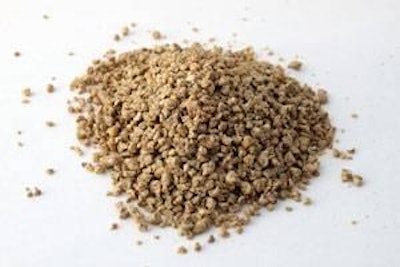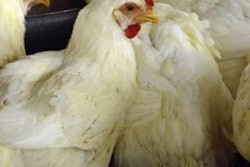
Frequently feed plants are faced with claims, either justified or spurious, from customers relating to alleged toxicity, contamination or substandard quality of feed. At best, if genuine, the complaint results in loss of goodwill.
Unfortunately, in many cases, a claim, which may result from inadvertent contamination, will precipitate legal action for direct and indirect losses sustained as a result of degraded performance of flocks and herds, loss of product, reduced sales and goodwill and decontamination. The costs of defending an action can be considerable and will include management time involved in assembling documents and for responding to interrogatories and depositions, legal fees, expenses and appointing experts. A series of incidents, which requires payments by an insurance carrier, will inevitably result in an escalation in liability premium.
Avoiding feed-related claims
At the outset, claims should be avoided through application of good management practices, which prevent delivery of incorrect product, inadvertent contamination with antibiotics or additives that should not be included in specific formulas, or deletion of nutrients that result in substandard performance due to nutritional deficiencies. These incidents can be prevented by maintaining appropriate quality control and assurance programs for ingredients and finished products. Claims can be best avoided by ensuring that all employees are adequately trained and comply with clearly stated operating procedures designed to anticipate and prevent “accidents” and defects. Effectively, risk avoidance, as with safety, must become part of the culture of the feed plant.
Responding to feed-related claims
Unfortunately, problems either real or perceived may arise in the course of business. The response to a claim should follow a predetermined plan to ensure that the situation is investigated in a methodical manner. This is necessary to determine a correct diagnosis and to assign responsibility for the incident. If the mill is liable, then the quantum of damages should be fairly assessed and the customer compensated to resolve the issue amicably and expeditiously. If the complaint is unjustified, then it is necessary to mount a durable defense based on documents attesting to feed quality, appropriate manufacturing procedures and the opinions of reputable specialists and experts experienced in the issues involved in the alleged feed quality incident.
On receiving a complaint, a predetermined action plan should be implemented. It is essential to immediately notify the insurance carrier of the possibility or existence of a claim since the insurance company involved will designate an adjustor and usually a lawyer who will be responsible for defending any action that arises should the complaint develop into a suit.
Complaints or claims should be viewed in a serious light with full disclosure of the potential for damages on initial receipt of a claim.
Effective communication among the participants at the production facility and with any regional or corporate office should be initiated. Minimizing the significance of a problem, destroying documents or creating a cover-up is always counterproductive, may involve illegal actions, will always prejudice the defense mounted by a feed producer and may even render the company liable for punitive damages.
The field representative or salesperson should visit the client’s facility accompanied, if possible, by the company nutritionist or veterinarian. At this time the client should clearly indicate the nature of the problem and provide production records for the affected herds or flocks, in addition to those which are apparently unaffected. Appropriate feed samples must be obtained.
A representative unopened bag of feed or at least 25 lbs of the implicated feed, if delivered in bulk, should be gathered preferably from the receiving feed bin or a feed hopper. Only in extreme circumstances should feed be sampled from a feeding system as separation of ingredients may have occurred compromising any subsequent analysis. Preferably, samples should be taken in the presence of an impartial witness and should be split, allowing the witness or client to retain a sealed container of the feed, duly labeled and initialed by all parties. Samples that are improperly obtained, handled or stored may subsequently be inadmissible as evidence.
In the event that there are any obvious clinical abnormalities in a herd or flock, or even if apparently normal, a veterinarian with experience in the species, and preferably with board certification, should be consulted. In addition, it is advisable to request the services of a state diagnostic laboratory or university extension specialist to review the farm records and circumstances relating to the claim. Although the field representative of the feed mill may select and transport poultry, hogs or calves to a diagnostic laboratory, it is always preferable for a diagnostician or veterinarian to visit the facility, observe the population and select live, clinically affected and dead animals or birds for examination. By visiting the facility it is possible to detect deviations from acceptable management, inadequate ventilation or defects in hygiene. These may either be the primary cause of the problem or may be contributing factors to mortality or loss of production.
It is essential to review plant production records relating to implicated batches of feed. If contamination is suspected, it is necessary to review sequencing of mixes, compliance with standard practices, including flushing, and to confirm that inventory of specific additives can be reconciled with production records.
If a specific additive or compound is alleged to be responsible for a problem, the manufacturer should be informed. Assays should be conducted on the commercial feed additive premix as delivered and on the mixed feed to determine that levels of active ingredients comply with label specifications and inclusion rates.
Care should be exercised in communicating with the client. Verbal statements may be selectively interpreted or may be construed as an acceptance of liability. Both internal company and client-addressed email and written communications are subject to discovery and can be used by opposing parties.
Conclusions
Many claims by clients arise from miscommunication, dissatisfaction with service, especially delivery schedules and prolonged or perceived defects in quality or price. Occasionally a claim is fabricated by a client who is in arrears with payment, creating additional complications. Appropriate credit control and assessment of risks associated with specific clients and their operations should be considered in relation to the possibility of future claims.
Feed claims are fortunately rare in well-managed feed operations. Accidents do occur even with a high standard of management, facility maintenance and quality control. When claims are received, they should be resolved amicably and expeditiously based on facts, a review of documentation and analyses of feed samples.





.jpg?auto=format%2Ccompress&fit=crop&h=167&q=70&w=250)












